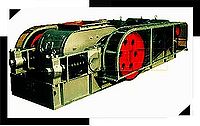Continuous Mills
Continuous Mills are used ball mills in various styles such as continuous, batch, granite lined, Jacketed and non-jacketed. The unique features of the ball mills are its assembly and the workmanship of all the machine parts.
The continuous mill supports are from fabricated plate section and the base where the bearing blocks are fixed are machined. This avoids the use of packing and misalignments whichnormally result in bearing failure. The bearings provided are heavy duty double spherical roller type to take care of the requisite load. The girth gears an made from cast steel and have a hardness of 300 BHN and are cut on accurate hobbing machine to give long life.
The feed material is fed to the centre shaft and discharged at the other end. Various types of grinding media are used such as steel balls, ceramic balls river pebbles etc. for different applications. The ball mills are generally used in manufacture of paints, pigments and micronizing extenders.
Features
- Single or Multistage crushing and screening;
- Crushing, screening and/or rod milling;
- Primary crushing and autogenous/semiautogenous grinding;
- High capacity and low price;
- Environment-friendly;
- Easy to maintain
Working Principle
The Continuous Mill is a horizontal rotating device transmitted by the outer gear. The materials are transferred to the grinding chamber through the quill shaft uniformly. There are ladder liner and ripple liner and different specifications of steel balls in the chamber. The centrifugal force caused by rotation of barrel brings the steel balls to a certain height and impact and grind the materials. The ground materials are discharged through the discharging board thus the grinding process is finished.
Video
